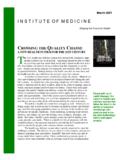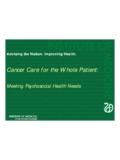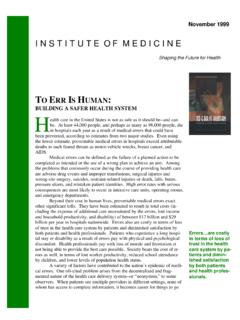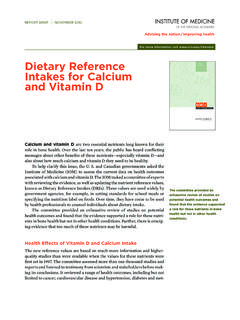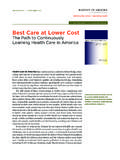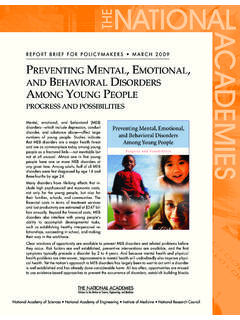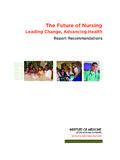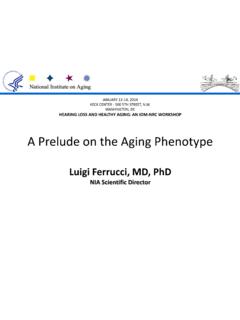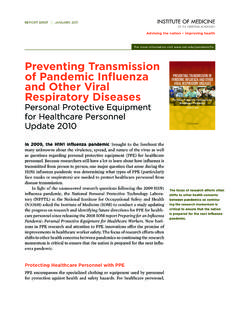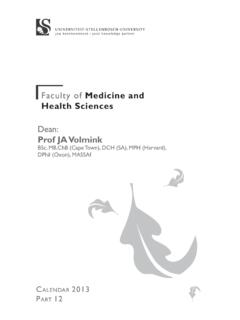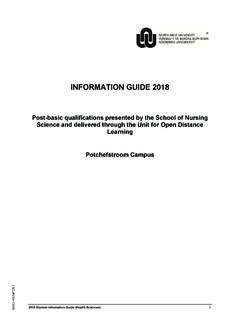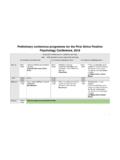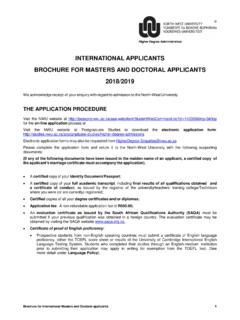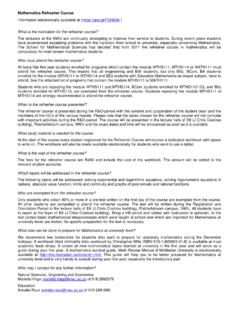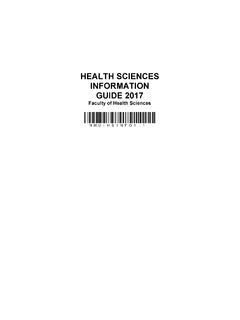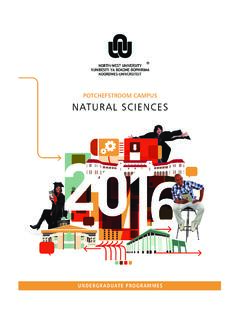Transcription of Public Health Implications of Raising the Minimum …
1 For more information visit Health Implications of Raising the Minimum Age of Legal Access to Tobacco ProductsOver the past 50 years, tobacco control in the United States has led to an esti-mated 8 million fewer premature deaths. However, tobacco use continues to significantly affect Public Health , and more than 40 million Americans still smoke. In 2009, the Family Smoking Prevention and Tobacco Control Act granted the Food and Drug Administration (FDA) broad authorities over tobacco products, though it prohibited FDA from establishing a nationwide Minimum age of legal access an MLA for tobacco products above 18 years of age.
2 It also directed FDA to convene a panel of experts to conduct a study on the Public Health Implications of Raising the Minimum age to purchase tobacco products. At FDA s request, the institute of medicine (IOM) convened a com-mittee in 2013 for this purpose. In the resulting report, Public Health Implications of Raising the Minimum Age of Legal Access to Tobacco Products, the committee of experts reviews existing literature on tobacco use initiation, developmental biology and psy-chology, and tobacco policy and predicts the likely Public Health outcomes of Raising the MLA for tobacco products to 19 years, 21 years, and 25 years.
3 The committee also uses mathematical modeling to quantify these predictions. Of note, the report contains only conclusions regarding Raising the MLA; as requested by FDA, the committee does not offer recommendations as to whether the MLA should be raised..tobacco use continues to significantly affect Public Health , and more than 40 million Americans still BRIEF MARCH 20152 Lowering Initiation RatesThe initiation age of tobacco use is critical. Among adults who become daily smokers, approximately 90 percent report first use of cigarettes before reaching 19 years of age, and almost 100 percent report first use before age 26.
4 As mentioned above, FDA cannot raise the MLA nationwide. However, states and localities can set a higher Minimum age for their communities. Most states currently set the MLA at 18 years. Four states set it at 19 years, and several localities around the country have raised the Minimum age to 21 years. Based on its review of the literature, the committee concludes that overall, increasing the MLA for tobacco products will likely prevent or delay initiation of tobacco use by adolescents and young adults. The age group most impacted will be those age 15 to 17 years.
5 The committee also concludes that the impact of Raising the MLA to 21 will likely be substantially higher than Raising it to 19. However, the added effect of Raising the MLA from 21 to 25 will likely be considerably less. The parts of the brain most responsible for decision making, impulse control, sensation seek-ing, and susceptibility to peer pressure continue to develop and change through young adulthood, and adolescent brains are uniquely vulnerable to the effects of nicotine. In addition, the majority of underage users rely on social sources like family and friends to get tobacco.
6 Raising the MLA to 19 will therefore not have much of an effect on reducing the social sources of those in high school. Raising the MLA to 21 will mean that those who can legally obtain tobacco are less likely to be in the same social networks as high school students. In the same vein, increas-ing the MLA from 21 to 25 is not likely to achieve additional notable reductions in social sources for those under age 15. Reducing Prevalence, Decreasing DiseaseDelaying initiation rates will likely decrease the prevalence of tobacco users in the popula-tion.
7 To quantify this decrease in both prevalence of tobacco users and in related Health concerns FIGURE: Committee Estimates Regarding Effects on Initiation RatesNOTE: This figure was created using data from Table 7-2 in the 25 MLA 21 MLA 1921-24 yrs19-20 yrs18 yrs15-17 yrsunder 15 yrsAge GroupDecrease in Initiation Rate100%3cent decrease if raised to 25. Given a decline in the initiation rates of tobacco use by adolescents and lower prevalence in the population, it follows that tobacco-related disease would also decrease in proportion to the reduction in tobacco use.
8 It is generally known that smoking-related diseases like cancer and heart disease develop over decades, and there-fore, it could take many years to lower rates of these diseases; however, there could be imme-diate decreases in other tobacco-related Health effects. The committee concludes that Raising the MLA will likely immediately improve the Health of adolescents and young adults by reducing the number of those with adverse physiological effects such as increased inflammation and impaired immune functioning caused by smoking, as these could potentially lead to negative Health conse-quences, including increased hospitalizations and lessened capacity to heal wounds.
9 Adverse maternal, fetal, and infant outcomes includ-ing preterm births, low birth weight, and sudden infant death will also probably decrease due to reduced tobacco exposure in mothers and infants. Raising the MLA will also lessen the population s exposure to secondhand smoke and its associated Health effects, both now and in the future. Over time, the committee concludes that rais-ing the MLA will likely lead to substantial reduc-tions in smoking-related mortality, though results from the models suggest that these results will not be observed for at least 30 years, assuming that the MLA increase occurs now.
10 The CISNET model The parts of the brain most responsible for decision making, impulse control, sensation seeking, and susceptibility to peer pressure continue to develop and change through young adulthood, and adolescent brains are uniquely vulnerable to the effects of nicotine and nicotine addiction. that could be a result of Raising the MLA, the com-mittee commissioned the use of two established and complementary tobacco simulation models, SimSmoke and the Cancer Intervention and Sur-veillance Modeling Network smoking population model (CISNET).
